Artists nowadays don’t have to take a vow of poverty in order to be successful or to garner recognition. A good example of this is Takashi Murakami, one of the most popular Japanese artists on the international art scene. About his origins he admits: "I wanted to be successful commercially. I just wanted to make a living in the world of "entertainment" and I was very clear about my strategy and what kind of paintings I’d have to do to that end, but since then my motivation has changed."
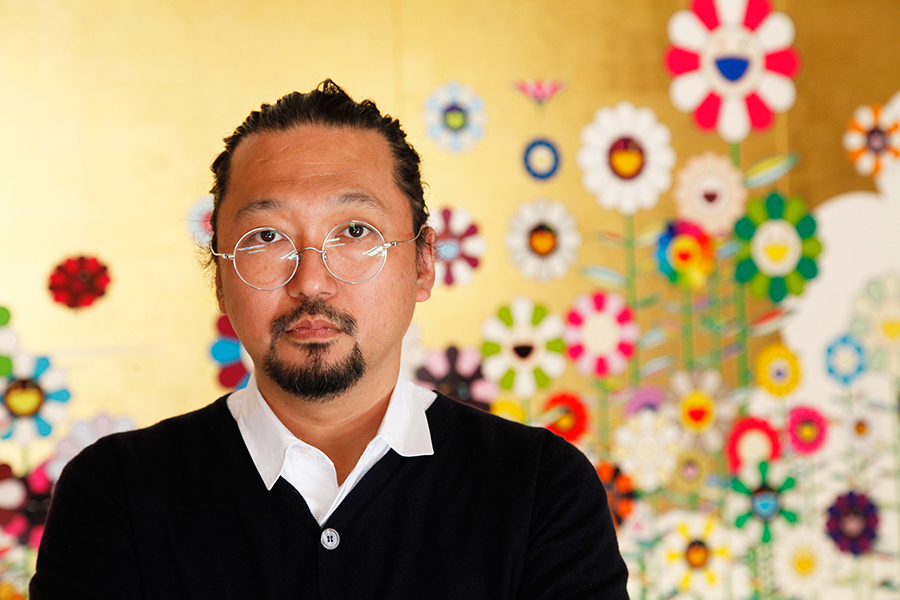
Photo: "Our Gang", available from http://www.japantimes.co.jp/, 26 April 2013
Known as the Japanese Andy Warhol because they both managed to turn art into merchandise and attract mass culture, this fact has led some to see his art as simply a business. But Murakami interconnects high art with popular culture, arguing that art forms part of the economy. He justifies this by saying: "Japanese people accept that art and commerce will rub shoulders; in fact, they’re surprised at the rigid and pretentious hierarchy of Western “high art"."
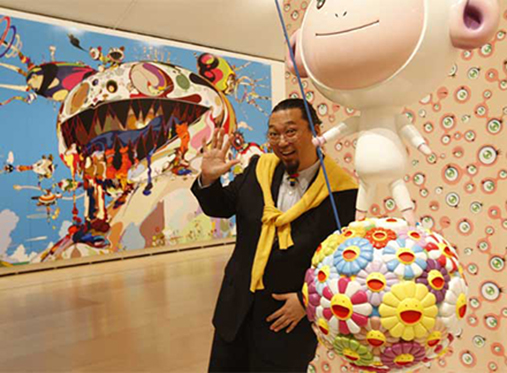
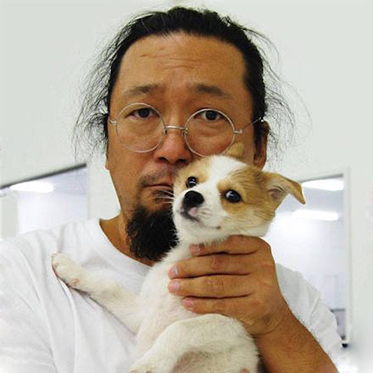
Photo (right): Takashi Murakami, available at http://www.dw.com/
Born in Tokyo in 1962, he left Tokyo University of Fine Arts and Music in 1983 with a PhD in “nihonga”, whereby paintings follow traditional Japanese artistic conventions both in technique and in subject matter and materials. He incorporates elements of Japanese culture from different eras in his work. On the one hand, traditional Buddhist iconography, 12th century painting, Zen painting and composition techniques from the 18th century Edo period, from which he adopts the use of fantastical and unusual images. On the other, he borrows contemporary popular elements of expression, such as Japanese “anime” (animation) and “manga” (comics) and also American pop art. He reworks this diversity of influences into myriad artistic media and formats, his work ranging from paintings reminiscent of cartoons to quasi-minimalist sculptures, giant inflatable balloons, films, watches, T-shirts and other mass-produced merchandise.
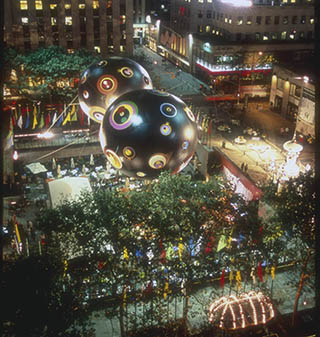
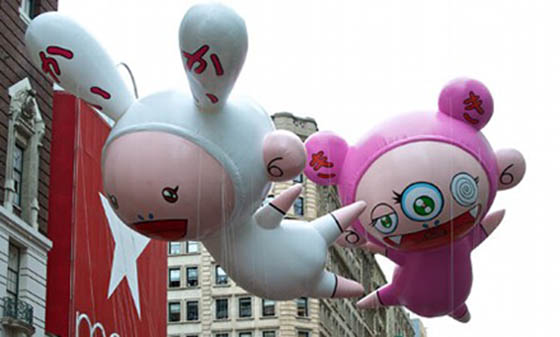
Photo (right): Balloons, available at http://www.terihaartadvisory.com/
His works are colourful and engaging and he uses his wide knowledge of Western art, working from the inside out to represent “Japaneseness” as a tool to bring about a revolution in the art world. "I believe that all artists should have strong, dark emotions within them in order to create works that have energy", and, according to Murakami, the force behind his work is for him "to become a living example of the potential of art."
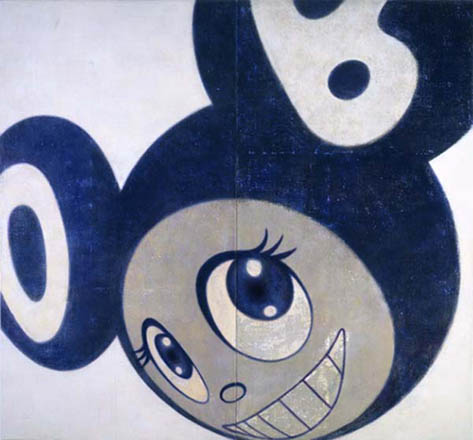
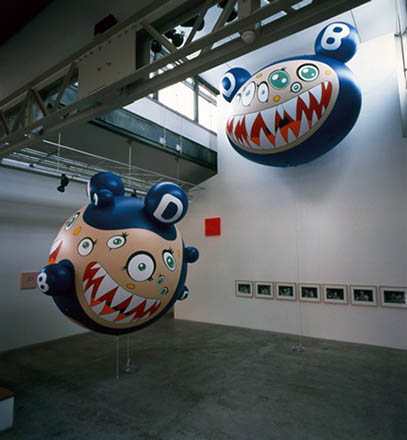
Photo (right): Crazy Z, available at http://www.artnet.com/
Murakami began to make a name for imself in the 1990s, following Japan's economic crisis of the late 1980s, hand in hand with the Nipponese Neo-pop generation. His work has been exhibited in prestigious museums around the world, such as the Tokyo Metropolitan Museum of Art, the Museum of Fine Arts in Boston, the Bard College of Art Museum and the Palace of Versailles.
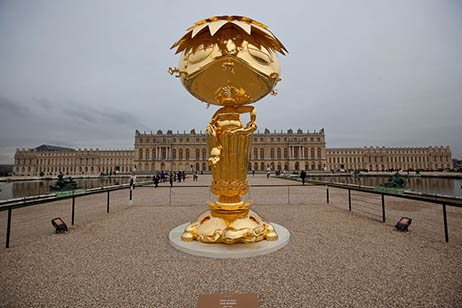
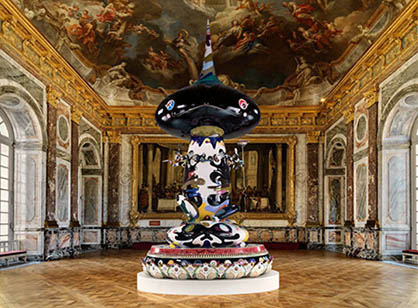
Photo (right): Tongari-kun, available at http://malaysiafinance.blogspot.com.es/
In 1996, he founded the Hiropon factory in Tokyo, which in 2001 became Kaikai Kiki Co. Ltd, an international corporation employing over 100 employees and dedicated to the production, management and commercialization of the art created by this multifaceted artist and also to support and promote up and coming new artists: twice a year, he organizes GEISAI in Tokyo, an art fair that allows young artists to exhibit their works, many of whom have ended up working for him. His company develops diverse projects with real market strategies that cross the boundaries of artistic circles to reach the general public, using mass production, merchandising, manufacturing and made-to-order corporate designs, some of them for prestigious brands such as Louis Vuitton and Issey Miyake.
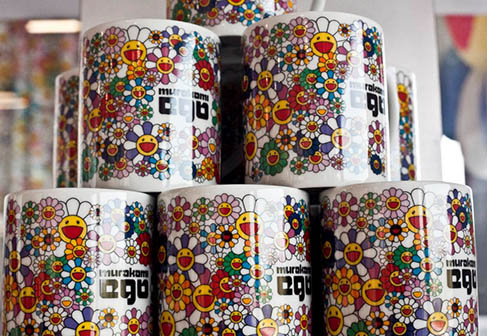
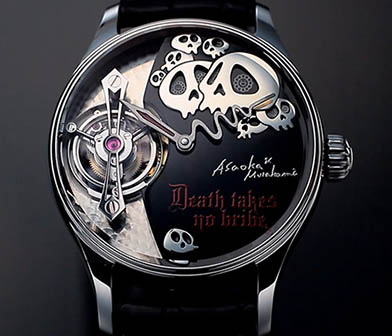
Some of Murakami’s characters have been evolving since the beginning of his career. His alter ego Mr. DOB, for instance, was born in the 1990s as a cute DNA helix (ZaZaZaZaZaZa, 1994) but he has gradually morphed first into a disturbing creature (Tin Tin Castle, 1998) and then a huge monster symbolizing society’s cravings for consumerism (Tan Tan Bo vomiting, 2002). He is one of Murakami’s recurring characters, a kind of logo or trademark, who is reproduced on T-shirts, posters, keychains, etc and has even been brought to life through 3D sculptures all over the world.
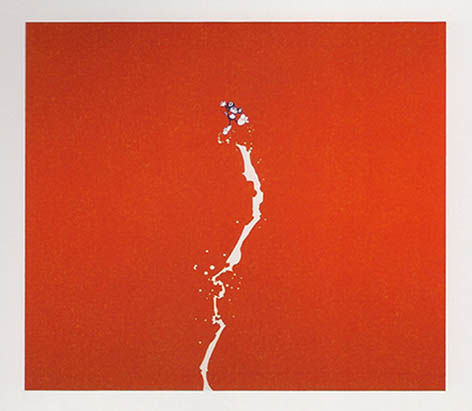
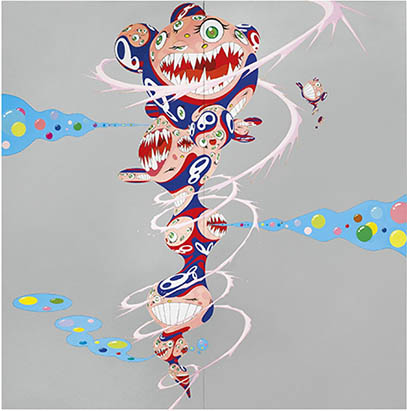
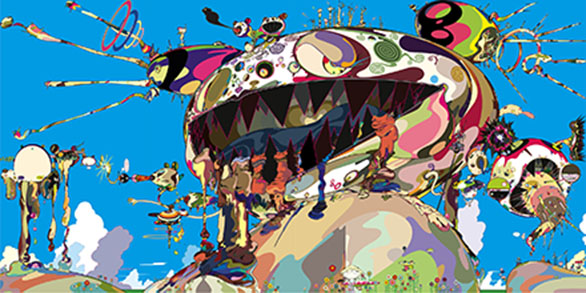
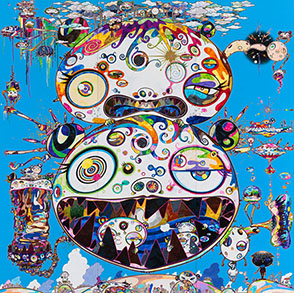
In 2000, Murakami organized a Japanese art exhibition entitled Superflat, linking contemporary Japanese pop culture with Japanese historical art, which gave way to a movement towards mass-produced amusements. This gave rise to the postmodern cultural current of the same name, which refers to its flat style and the absence of depth or persepective in his compositions. This aesthetic, in which everything is depicted in two dimensions, offers an external interpretation of postwar Japanese popular culture through its “otaku” subculture, a term that designates what in the West we would call “geek” or “nerd” and which refers to people obsessive about their hobbies. Hence his invention of the term "POKU", a portmanteau of “pop” and “otaku”: "Everyone works to make a living. Me too. And I hoped that some people would be interested in my art if I offered an expression of it like Poku culture because it's fun."
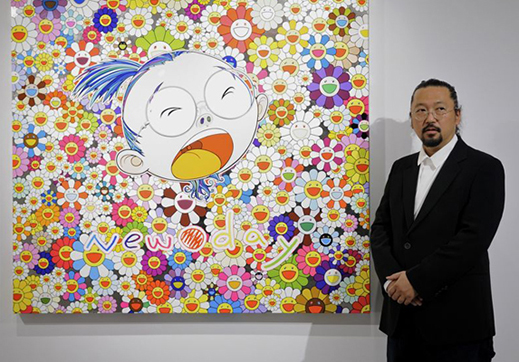
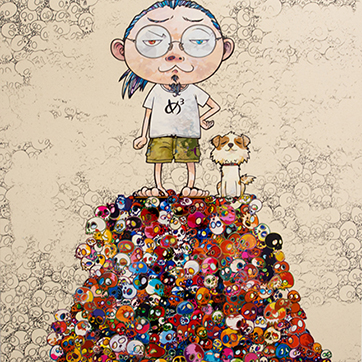
Examples of his work from this period here are Miss Ko2 (1997), a stylized anime-like waitress who wants to be a singer; Hiropon (1997), a young woman with unfeasibly large breasts; My Lonely Cowboy (1998), a naked teenage boy; PO + KU Surrealism Mr. DOB (1998), a large-scale triptych in which his typical superflat monochrome background is broken up by animated images of bulging eyes and razor-sharp teeth; or one of his larger sculptures, DOB in the Strange Forest (1999).
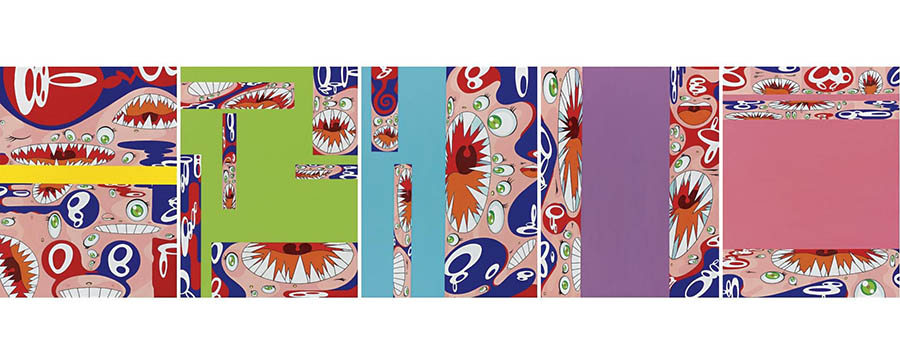
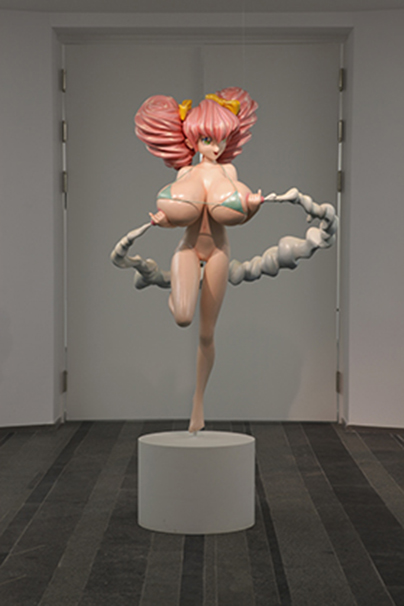
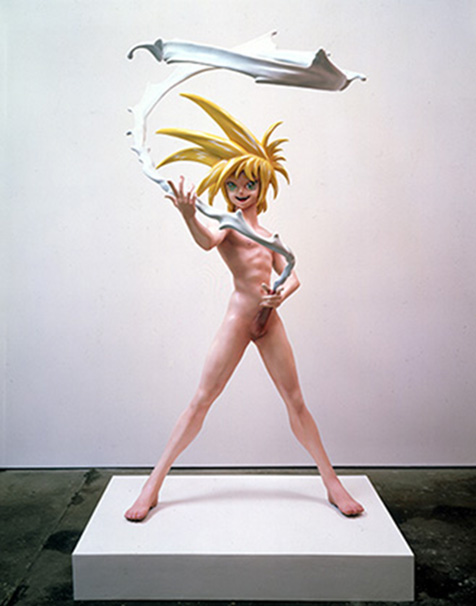
From 2000 on, Murakami has been creating other self-portraits in addition to Mr. DOB: between 2003 and 2005 Mr. Pointy and the Four Guards, based on the four Buddhist Protector deities; in 2004, Inochi, a teenager reminiscent of Spielberg's legendary E.T.
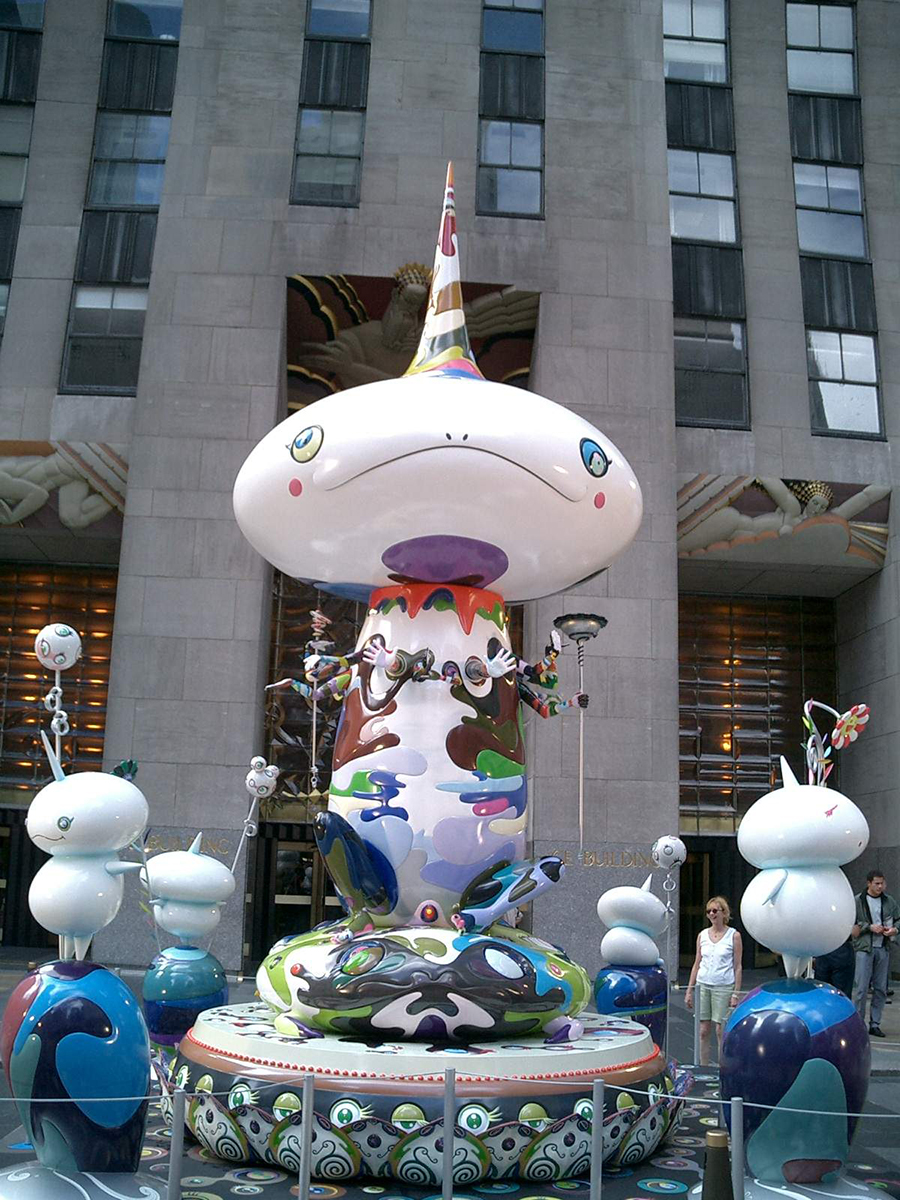
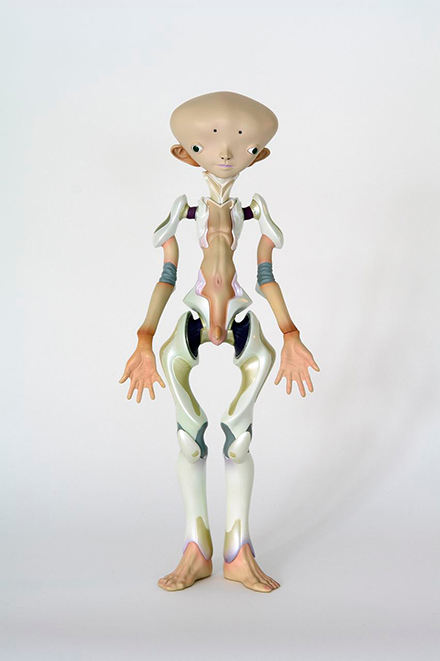
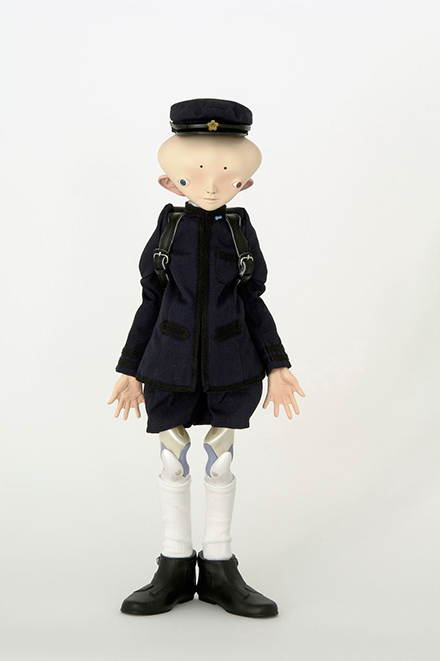
The cute Kaikai and Kiki, whose names derive from the term “kikikaikai” which means "strange but captivating" are the author's spiritual guardians.
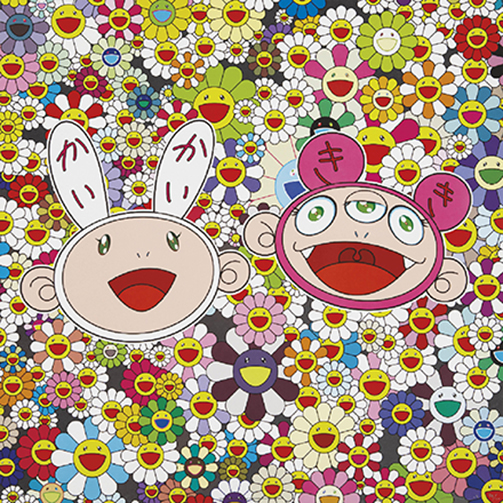
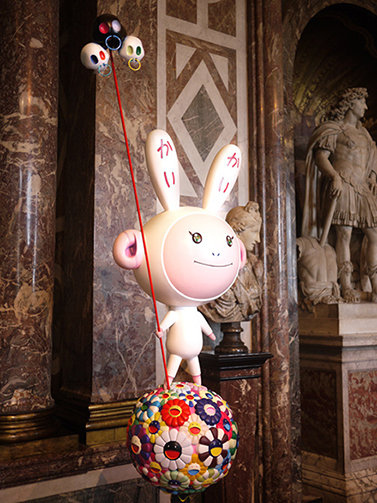
Taking a look at his iconography, we see that one of the most recurrent is fungi, perhaps atomic mushrooms? For those who think so, it might represent the trauma caused by the atomic bombs dropped on Japan in WWII. For others, however, they symbolize male genitalia or a reference to drug-induced hallucinations.
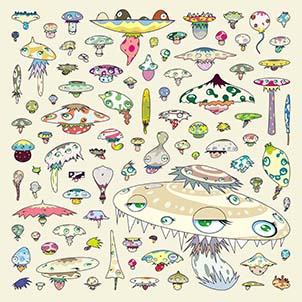
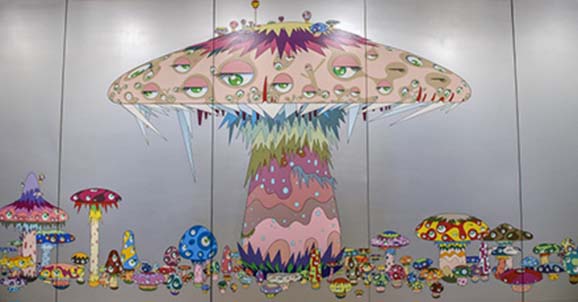
Other motifs are his multicolored daisies with smiling faces and skulls which relate to the aesthetics of “kawaii” which means "cuteness" and which in Japan is used in situations that to Western eyes might seem incongruous. Is it also a critique of Japan's overly consumerist culture with a penchant for the childlike.
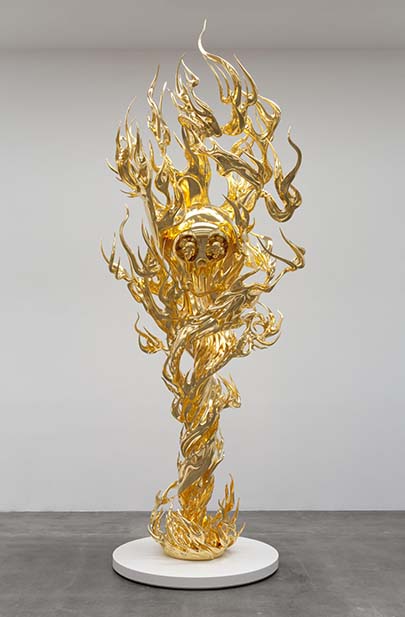
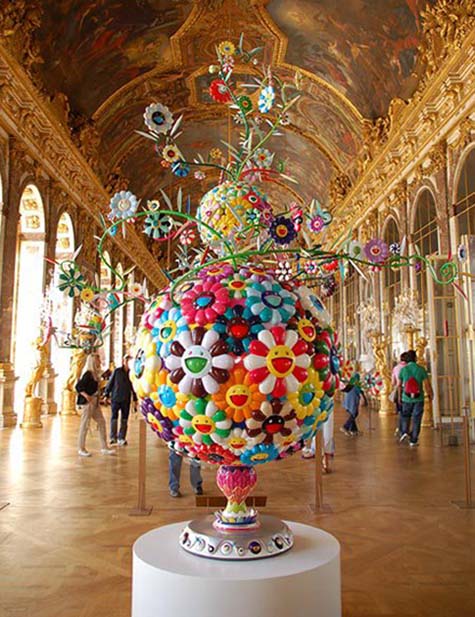
What is obvious is that his career has been unstoppable and that he has presented some very impactful exhibitions such as Coloriage (Cartier Foundation for Contemporary Art, Paris, 2002) and Little Boy: The Art of Japan's Exploding Subcultures (Japan Society, New York, 2005).
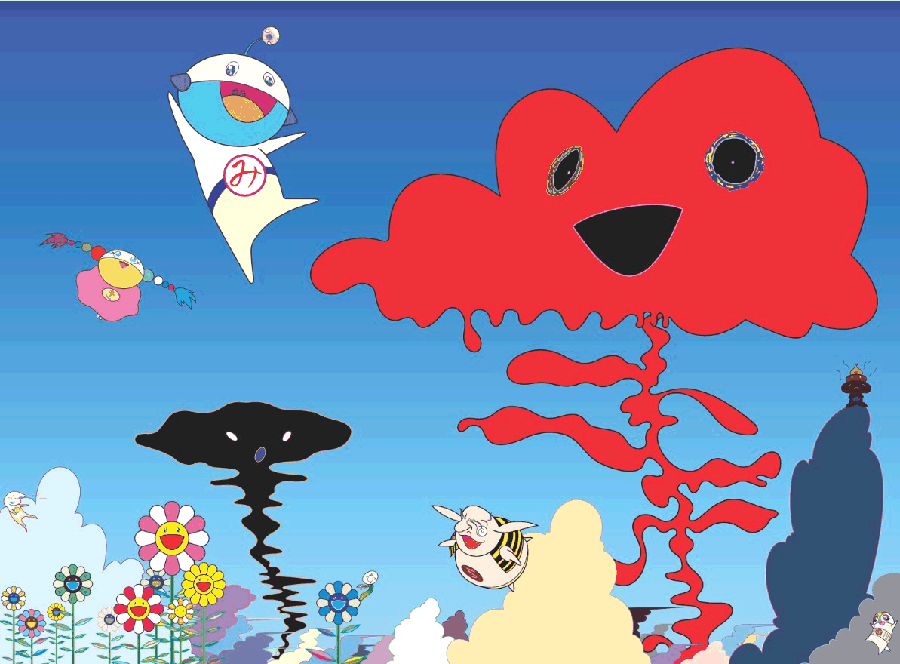
After touring the MoCA in Los Angeles, the Brooklyn Museum in New York and the Museum of Modern Art in Frankfurt, he arrived at the Guggenheim Museum, Bilbao in 2009 with ©MURAKAMI, a retrospective displaying over 90 works of art in different mediums. For instance, there was the evolution over time of Mr. DOB and some of his other iconic characters, his figurative projects inspired by the “otaku” of the late 90s or fantastical sci-fi figures such as SMPKO2, among others. It is worth noting the presence of one of his most important pieces: Oval Buddha, silver (2008), which depicts a Buddha meditating on a lotus leaf. The exhibition rounds off with some abstract paintings all in different techniques (graffiti, Op Art or special effects), some of his animation work and, finally, a compilation of 500 items of merchandising manufactured by his company.
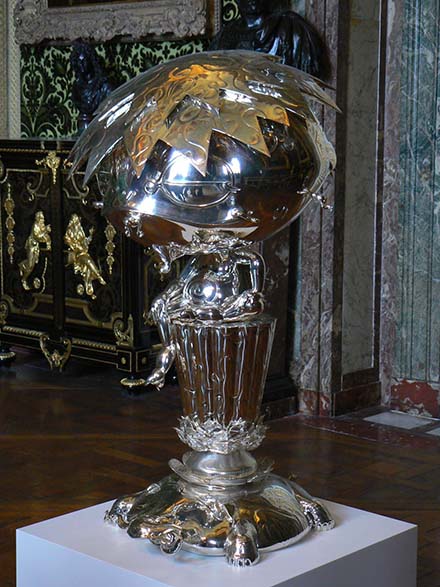
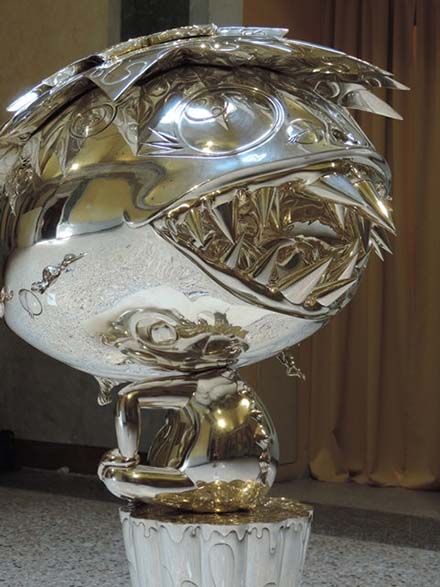
In 2011, following the Tohoku earthquake and tsunami, he hosted “New Day: Artists for Japan”, an international charity auction at Christie's in New York. The Murakami-Ego exhibition, whose centrepiece was an astonishing 100-meter painting inspired by that same earthquake and the Fukushima Nuclear Disaster could be seen in 2012 at the Riwaq Al Hall in Doha, Qatar. In 2014, Takashi Murakami: Arhat Cycle was performed at the Palazzo Reale in Milan in 2014 and, at the Gagosian Gallery in New York, In the Land of the Dead, Stepping on the Tail of a Rainbow, which showcases the themes that the artist had developed in recent years about the origin of religions.

As a keen anime enthusiast, Murakami then moved onto action and set his characters in motion. He has made short videos, such as Pharrel Williams’ It Girl, but he has also undertaken major projects. Jellyfish Eyes is the first feature film in a trilogy that he directed and produced himself. It premiered in April 2013 at the County Museum of Art in Los Angeles and has been screened in museums and cinemas around the world. For 90 minutes, the artist takes us, through animation and real people, to the Japan that suffered the 2011 earthquake and the Fukushima disaster, unleashing the full array of colourful creatures to which we have grown accustomed. It was not easy for this project to come to fruition because of the artist's demands, as he himself acknowledges: "It's not a simple or a nice process. At the end of the first film, the team was so fed up they didn't want to work on the second."
The unusual thing about Murakami is his use of new technology: every creation begins as a sketch in one of his many pocket notepads. These drawings are scanned and from there, reworked in Adobe Illustrator, the composition retouched and thousands of colours played around with until the final version is delivered to his assistants who print them onto paper, silkscreen the outlines onto canvas and only then does the painting begin. He himself acknowledges: "Without the support of technology, I could never have produced such a large number of works efficiently and the work wouldn’t have been so intense."
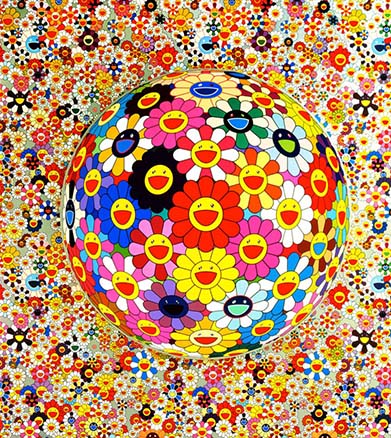
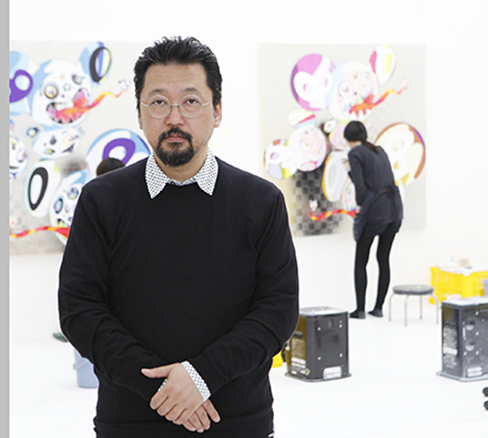
Through his work, Murakami plays with contrasts and double meanings: East and West, past and present, high and low culture, sweetness and perversion, humour and social critique ... while still being consistently fun and accessible. According to him, an artist is someone who understands the boundaries between different worlds and makes an effort to familiarise themself with them.
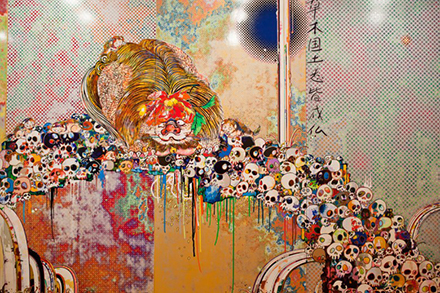
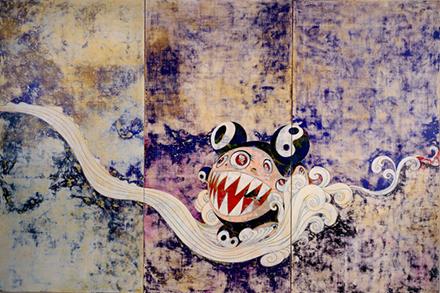
His art, which at first glance could be dismissed as naive or superficial, is actually a complex art project which one discovers, on closer inspection, to be thoughtful and stimulating. The artist does not want to confine himself to just copying Western culture and behind each choice of his seemingly innocent figurines lies a social critique denouncing consumerism and the lack of cultural structures in Japan. He has said: "I express despair. If my art seems positive and cheerful, I doubt it would be accepted onto the contemporary art scene. My art is not pop art. It is a recognition of the struggle of people suffering discrimination."
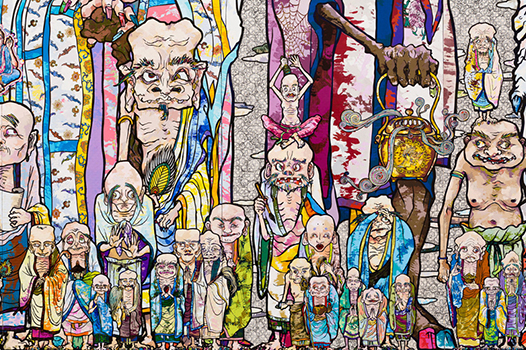
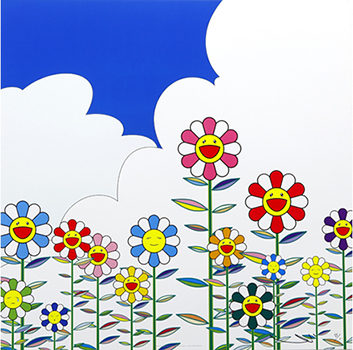
"I’m surprised at the impact this exhibition has had." These are the words of Michael Darling, curator at the Museum of Contemporary Art in Los Angeles, and regarding the artist himself, he says: "Superflat also alludes to the leveling of distinctions between high and low. Murakami likes to brag that he can make a million-dollar sculpture and then take the same theme and produce a load of cheap rubbish."
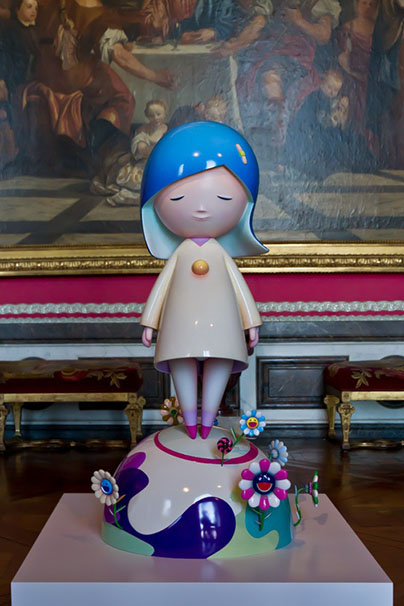
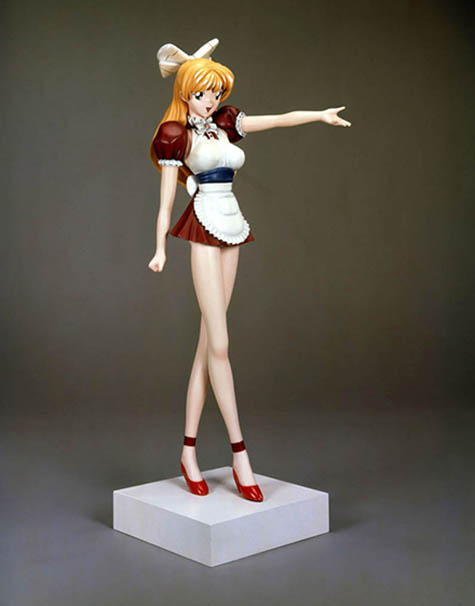
Despite some opinions railing against commercialization in his art, Murakami's commitment to achieving whatever he sets out to is undeniable and that has earned him a place among the most celebrated and in-demand artists of today.
(Translated from the Spanish by Shauna Devlin)
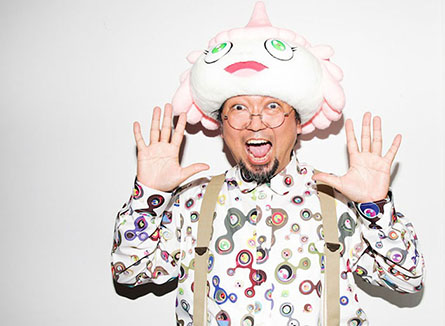
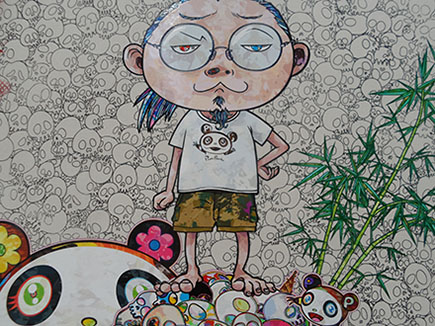
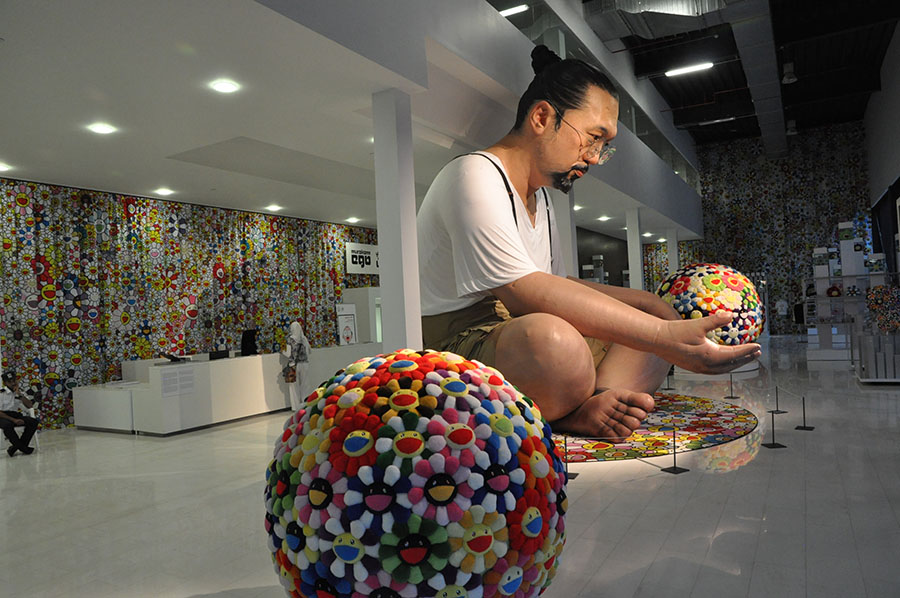
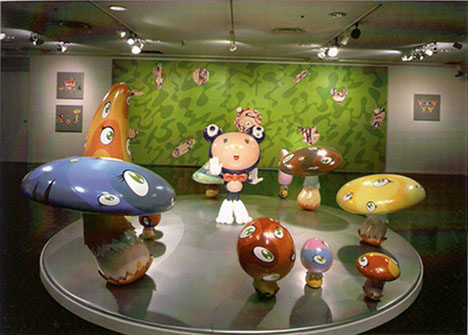
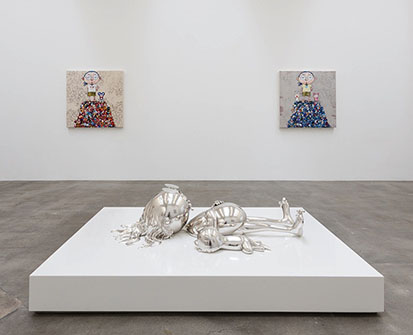
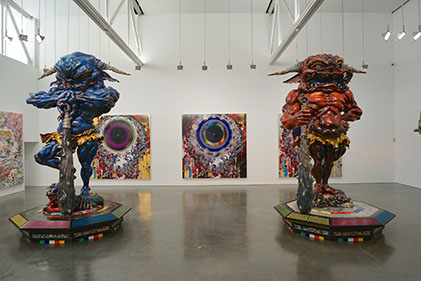
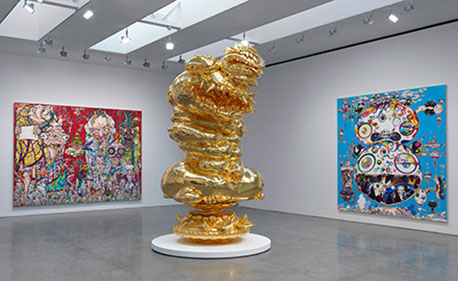
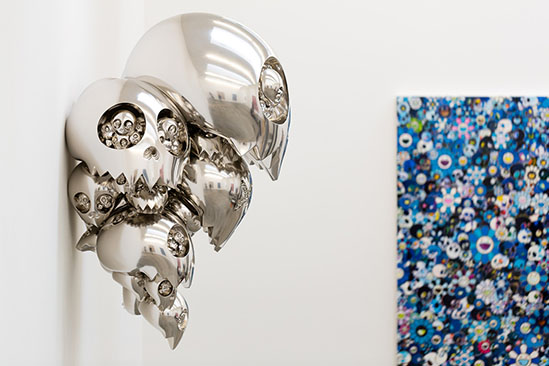
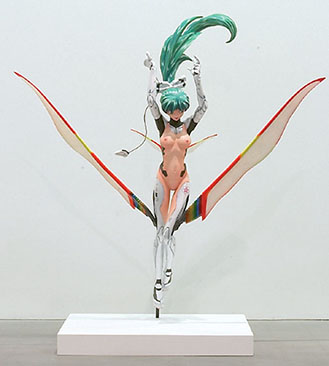
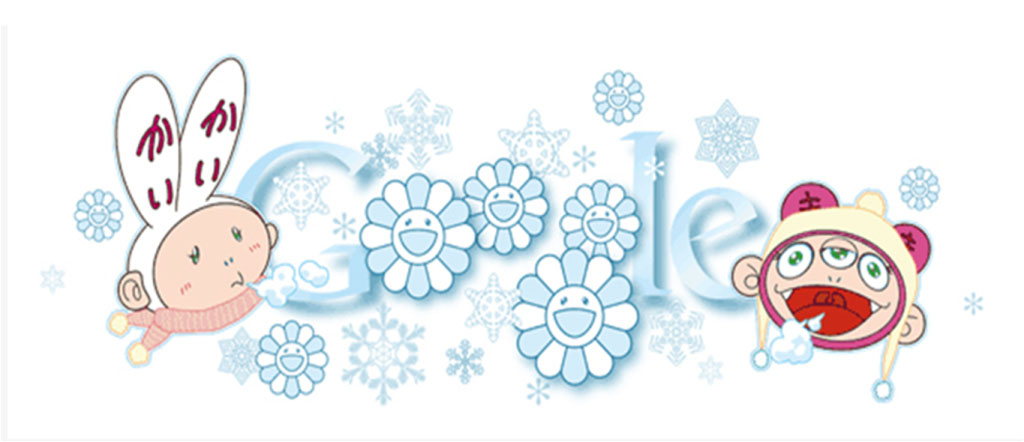
- Takashi Murakami: Biography, Works and Exhibitions - - Alejandra de Argos -



